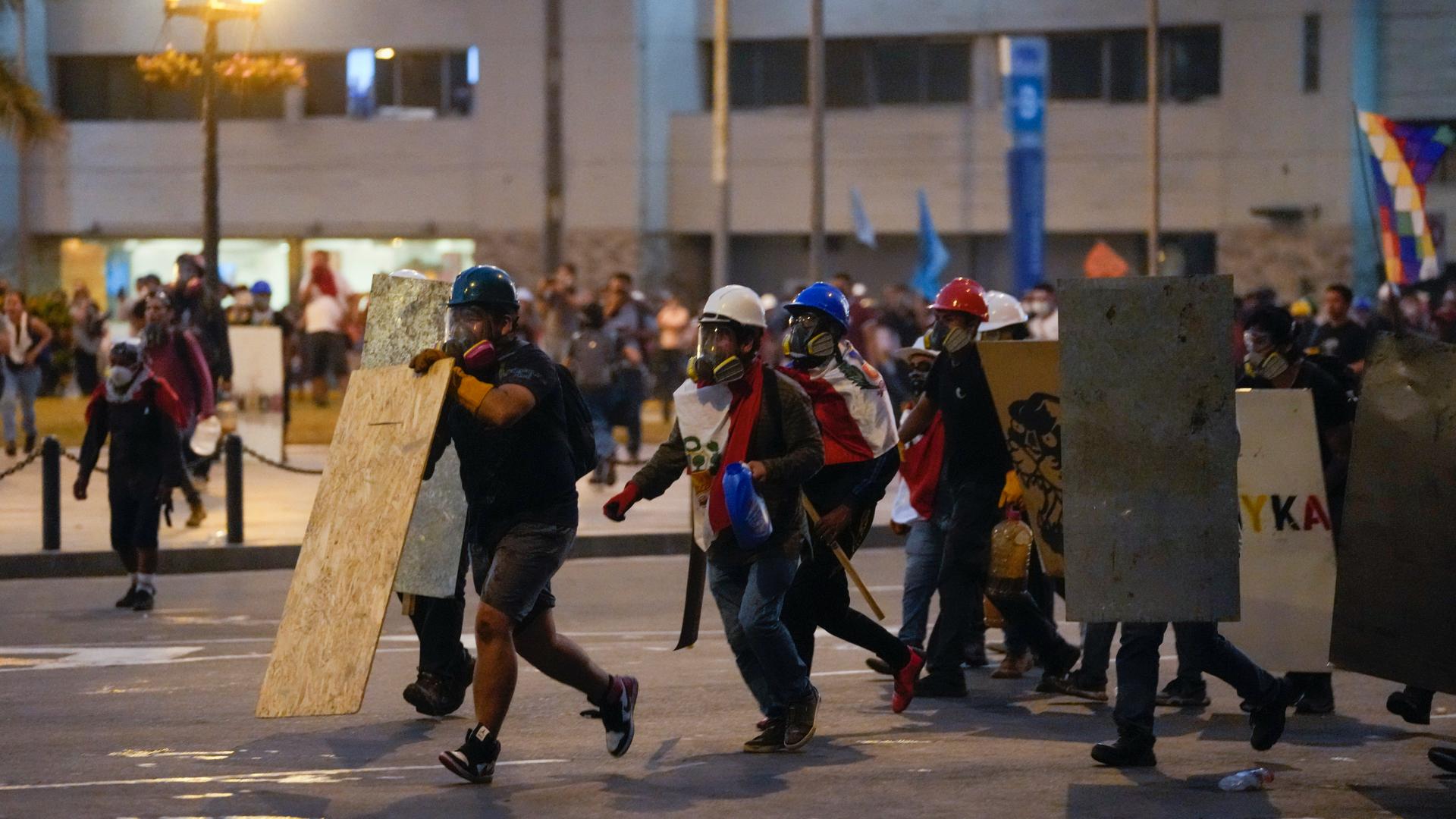Peru protests reveal ethnic and regional divides
After 17 protesters were killed in a single day in her region of Puno, Peru, Margarita Condori packed a suitcase, and traveled with dozens of her neighbors to the capital city of Lima.
On Tuesday, they joined thousands of Indigenous people from Peru’s southern highlands who marched through the city center to demand that the nation’s president resign.
“We feel like we’re living through a dictatorship,” Condori said. “We’re here to demand that they hold new elections, and change the constitution.”
More than 50 people have been killed in southern Peru in protests that broke out in December, and have resulted in street battles between police forces and largely Indigenous groups of protesters who have fought back with rocks, slingshots and homemade rockets.
President Dina Boluarte this week called for a truce. But few have listened to her pleas and continue to stage daily demonstrations in Lima, as well as roadblocks in rural areas that are also hurting the economy.
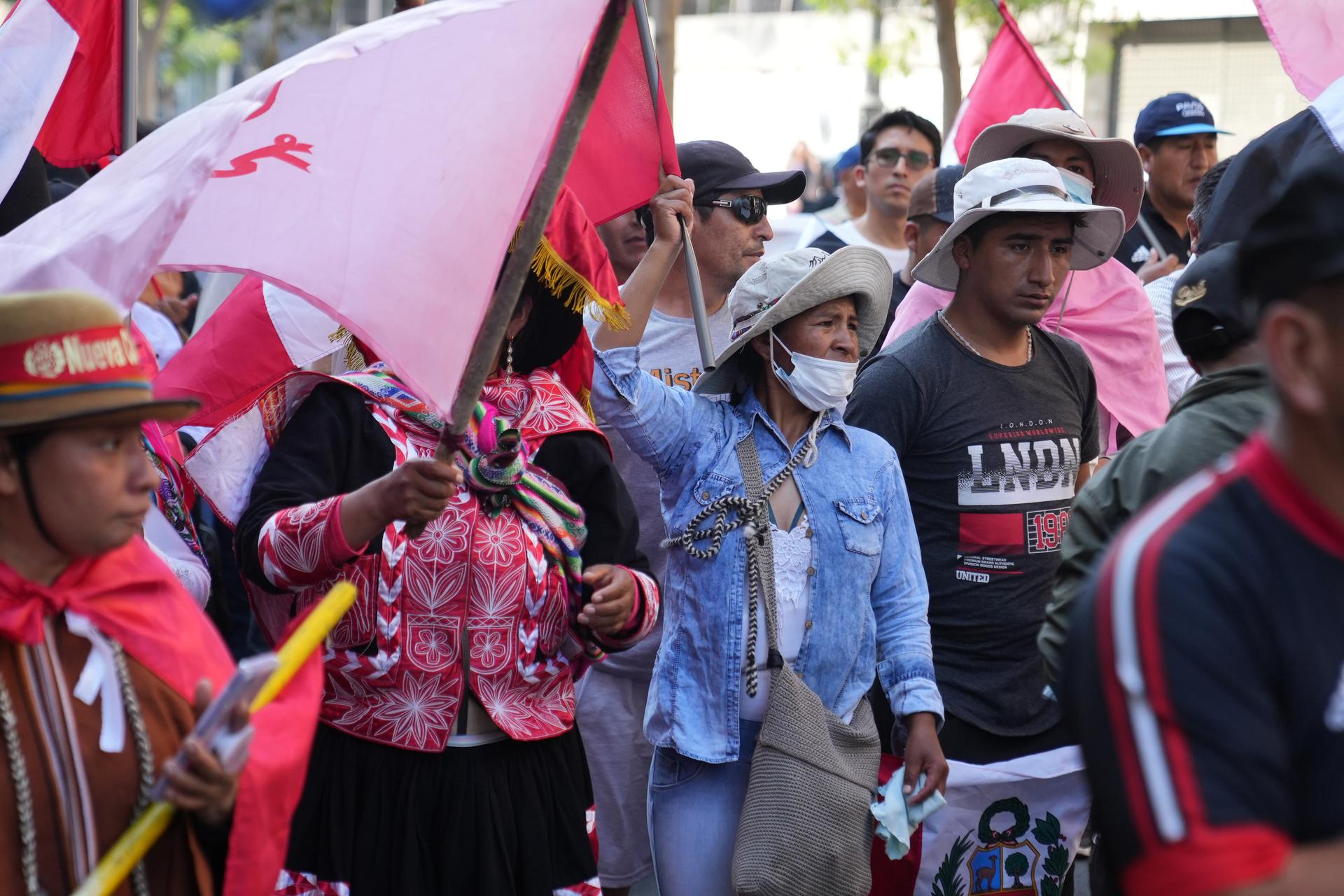
The protests have turned into a major challenge for Boluarte, who is Peru’s sixth president in as many years. And they highlight how the South American nation’s democracy has been afflicted by corruption scandals and congressional squabbles that have undermined trust in its institutions.
“Boluarte was imposed on us by Congress,” said Margarita Guzman, a resident of Lima who took part in Tuesday’ protest. “It’s like no one cares about our vote.”
The current wave of protests was unleashed by the removal in December of President Pedro Castillo, a leftist teacher and former union leader, who was popular among Indigenous people in Peru’s highlands.
Castillo was facing an impeachment vote in Congress, as well as several corruption investigations. So, in an effort to outmaneuver his political foes, he attempted to dissolve the Legislature and set up an emergency government that would rule by decree until new elections were held.
The military refused to support the move, and Peru’s top court said it was illegal. Within hours of announcing his plans to dissolve Congress, Castillo — an outsider with little experience in national politics — was arrested on rebellion charges and impeached and replaced by his vice president, Boluarte.
Castilllo’s removal was celebrated by his opponents in Congress, and it was largely accepted in Peru’s capital where many had been reluctant to vote for him in the 2021 election.
But it sparked large protests in cities located in Peru’s highlands, such as Cusco, Ayacucho and Puno where the bulk of his voters live.
The former schoolteacher hails from a small village in the Andes mountains and had promised to boost government spending in rural areas. Many members of Peru’s Indigenous minority see him as someone who was finally trying to stand up for them.
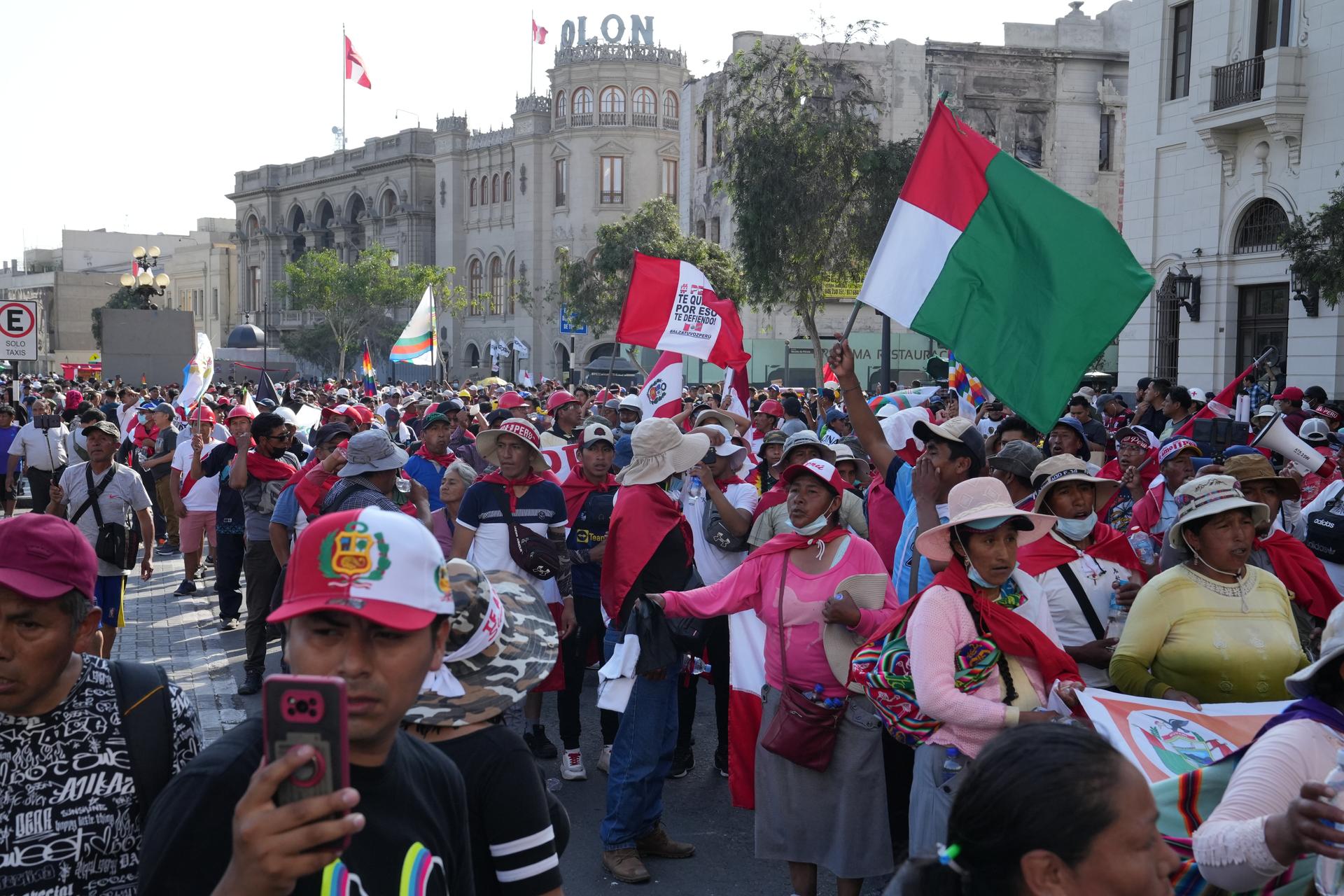
“Despite his corruption and his inefficiencies … he was still an Indigenous man from the northern Andes,” said Alonso Gurmendi, a Peruvian politics professor at Oxford University. “And that is important from the point of view of identifying with him in the most-excluded sectors of society.”
“Castillo in a sector of the country was still seen as the least bad of all alternatives,” said Will Freeman, a Princeton University scholar who is writing a book on anti-corruption strategies in Latin America.
“There’s an area of the country which typically leans left, which saw Castillo as a figure who might be involved in corruption, who might be an inefficient manager, but at least he wasn’t a businessman from Lima’s elite.”
After protests turned violent in Peru’s southern highlands, thousands of people from that region decided to travel to the nation’s capital to have their voices heard.
Milagros Rivera took a 16-hour bus ride from the province of Abancay where she’s a subsistence farmer. She said she felt cheated by Castillo’s removal.
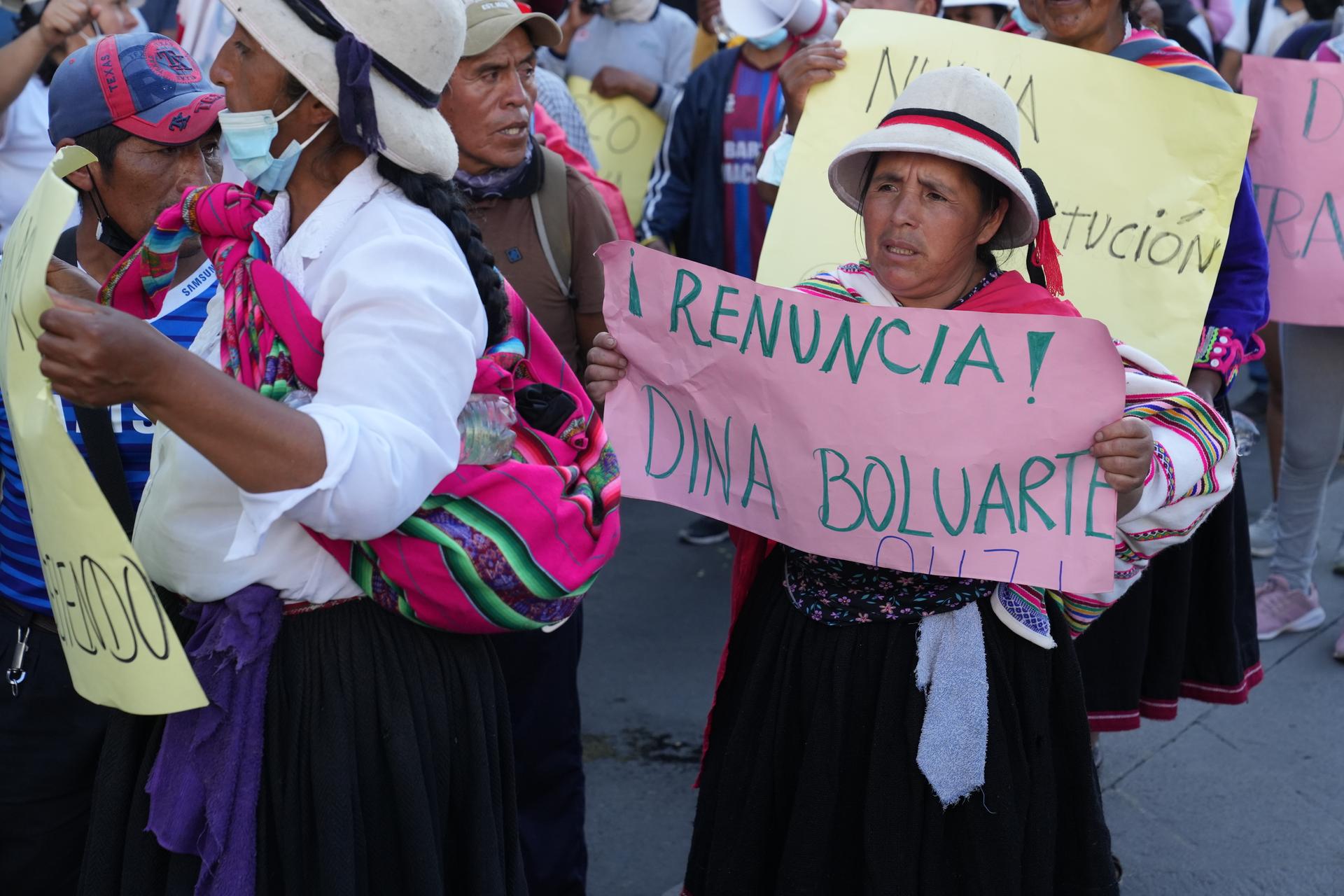
“The state has always ignored us,” Rivera said. “We have bad hospitals, we have no schools, we don’t have proper roads to take our products to the market.”
The protesters from Peru’s Andes mountains have also been joined by some Lima residents who are appalled by the recent cases of police violence.
“I’m not from the left or from the right, and I’m not a Castillo supporter,” said construction worker Javier Puman, who carried a banner with a black ribbon on it. “I’m just here because the government is abusing our people, and we feel very hurt by what is happening.”
Boluarte has tried to make peace. In a press conference on Tuesday, she accused criminal groups of using the protests for their own benefit, as rioters in some parts of the country try to burn down government buildings where criminal records are held.
Boluarte also urged people in rural areas to stop staging roadblocks that are hurting sectors such as agriculture and tourism.
“Paralyzing transport, and creating chaos is not going to generate anything positive,” she said. “It’s not going to help us to recover from the economic losses we endured during the pandemic.”
Boluarte is trying to meet with local governors and mayors to discuss regional priorities and set out new development plans. But some say she needs to go further.
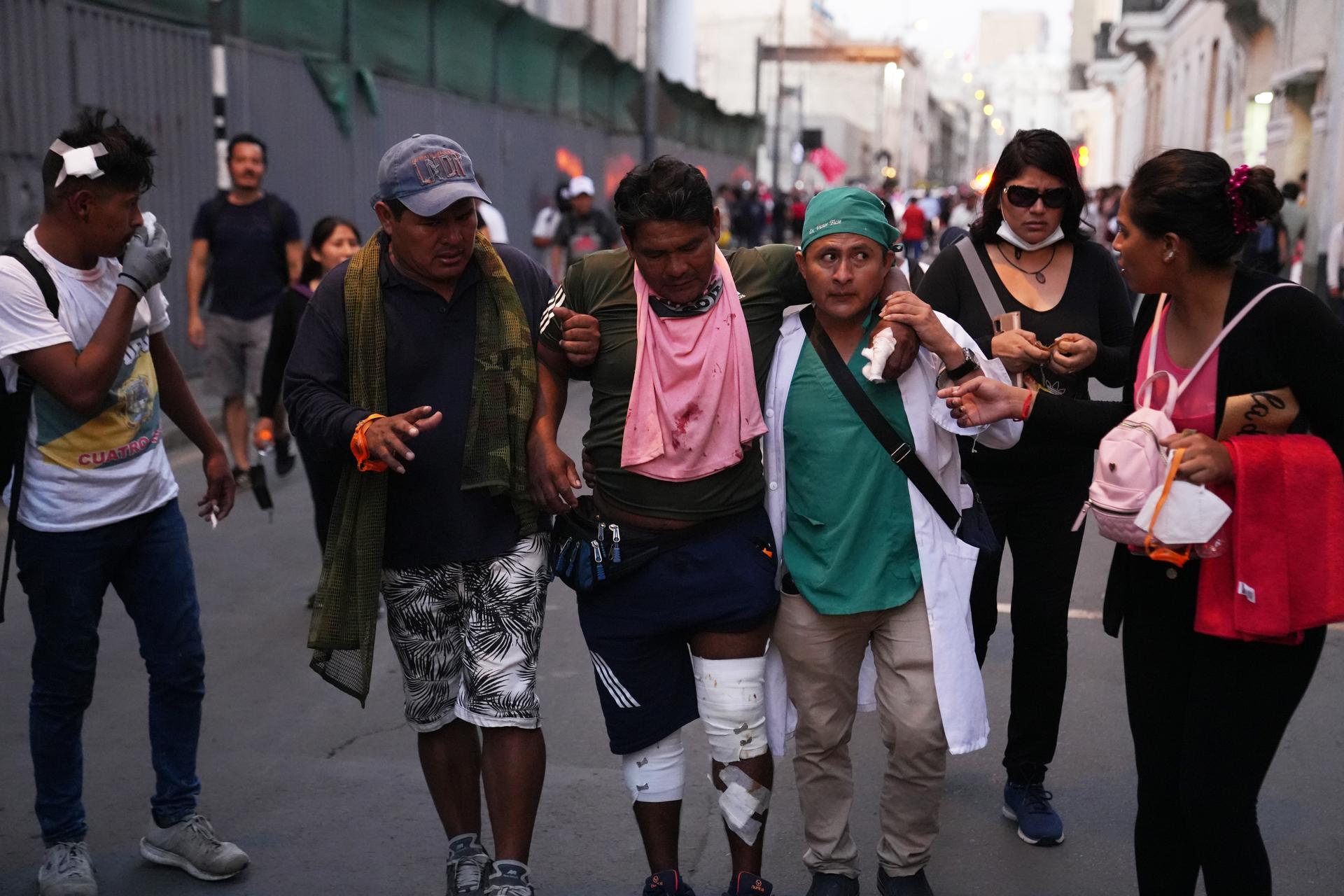
“These protests can be demobilized by an act of contrition from the country’s elite,” Gurmendi argued. “To [admit] things haven’t worked. And we need to have a change in tune.”
While Peru has reduced its poverty rate by more than 25% since the 1990s and overcome problems such as hyperinflation and terrorist attacks, many Indigenous people are still finding it hard to access high-quality jobs and social services.
In the streets of Lima, some protesters said that they had lost faith in the current government’s ability to do anything meaningful for this minority, which makes up around a quarter of the nation’s population.
“We are going to be staging protests, until the president resigns,” said economics student Jose Raul Capablanca. “And until the people can choose their own destiny.”
